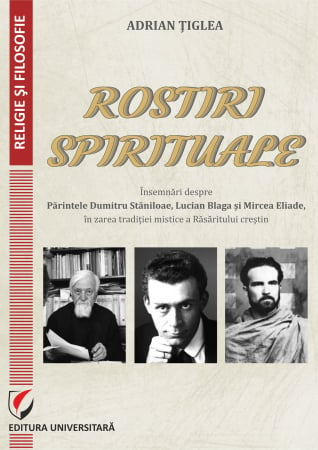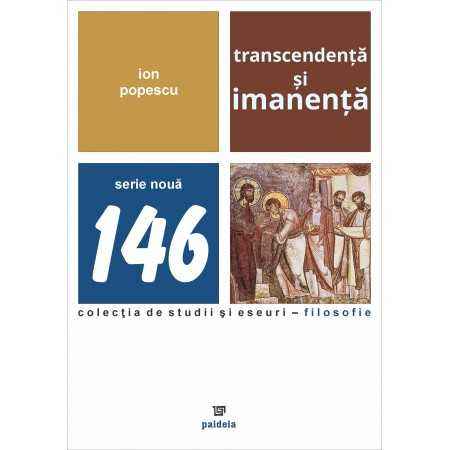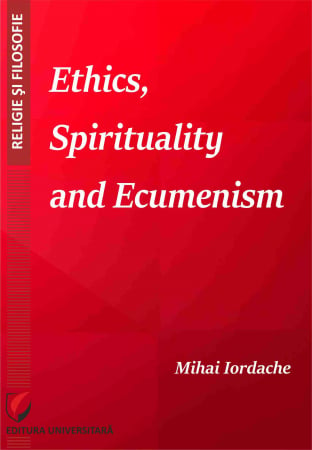ISBN: 978-606-28-1106-8
DOI: https://doi.org/10.5682/9786062811068
Publisher year: 2020
Edition: I
Pages: 572
Publisher: Editura Universitară
Author: Ionut Holubeanu
- Description
- Download (1)
- Authors
- Content
- More details
- Reviews (0)
The work we present is actually the first comprehensive monograph of a Romanian province and it adds to other studies and books published by the same author so far. It is part of the elite works of historiography in our country and is also a reference volume for future research. Therefore, knowing his youth and creative power, I look forward to others like him.
Prof. univ. Dr. Emilian POPESCU,
member of the Romanian Academy
-
Monasticism in Dobrogea from its origins to the present day
Download
Foreword (by acad. Emilian Popescu) / 11
Introduction / 13
I. THE TERRITORY BETWEEN THE DANUBE AND THE SEA. HISTORICAL COORDINATES / 23
II. CHURCH ORGANIZATION AND RELIGIOUS SITUATION IN THE TERRITORY BETWEEN THE DANUBE AND THE SEA OVER TIME / 35
III. THE APPEARANCE, DEVELOPMENT AND EVOLUTION OF MONACHISM IN THE CHRISTIAN EAST / 52
IV. PRE-MONKAL MOVEMENT ON THE TERRITORY OF THE ROMANIAN PROVINCE SCYTHIA / 66
IV.1. General assessments / 66
IV.2. The Holy Martyrs Epictetus The Priest and Astion the Monk / 69
IV.3. The Holy Martyrs of Niculitel and the Holy Bishop Ephrem / 75
V. THE APPEARANCE AND DEVELOPMENT OF INSTITUTIONALIZED MONACHISM ON THE TERRITORY OF THE ROMANIAN PROVINCE OF SCYTHIA (IV CENTURY) / 78
V.1. Audience movement / 78
V.2. Danubian-Pontic monasticism in the second half of the 4th century / 84
V.2.1. The situation of Danubian-Pontic monasticism during Saint John Casian / 84
V.2.2. The influence of Saint John Casian on Danubian-Pontic monasticism during the Late Antiquity / 91
V.2.3. Saint Theotim I of Tomis / 94
V.2.4. Saint Brittany of Tomis / 99
VI. INFORMATION ON THE SITUATION OF DANUBIAN-PONTIC MONACHISM IN THE V-VIII CENTURIES / 101
VI.1. Archimandrite Carosus / 101
VI.2. Saint Dionysius the Little / 108
VI.2.1. Biographical data / 109
VI.2.2. Information about the Danubian-Pontic monasticism in the work of Saint Dionysius the Little / 111
VI.2.2.1. Preface to the Latin translation of Epistles 45 and 46 of St. Cyril of Alexandria addressed to Bishop Successus / 111
VI.2.2.2. Preface to the Latin translation of the Synodal Epistle to Nestorius and the 12 Anathematisms of St. Cyril of Alexandria / 114
VI.3. Scythian monks / 119
VI.3.1. Involvement of Scythian monks in theological disputes in the Empire / 119
VI.3.2. Scythian monks, supporters of the theoanthropopashite formula, known today / 124
VI.3.3. The situation of Danubian-Pontic monasticism during the period of the Scythian monks / 129
VI.3.4. The soteriological teaching of the Scythian monks / 136
VI.3.5. The internal organization of the Scythian chinovids / 145
VI.4. Samuelis Monastery. The abbot Paul. Deacon Zoticos / 148
VI.5. Monastic life between the Danube and the Sea in the 7th century / 151
DANUBIAN-PONTIC MONACHAL COMPLEXES FROM THE IV-XI CENTURIES / 154
VII.1. Casian Cave / 155
VII.2. Paleo-Christian monastery from (L) Ibida (Slava Russian village) / 159
VII.3. The cave monastic complex from Dumbraveni / 165
VII.3.1. Roman-Byzantine period (IV-VI centuries) / 165
VII.3.2. Period of the Early Middle Ages (IX-X centuries) / 169
VII.4. The cave monastic complex from Murfatlar / 172
VII.4.1. Description of monuments / 173
VII.4.2. Dating of the complex / 193
VII.4.3. The destination of the cave complex / 203
VII.4.4. The faith of the monks from Murfatlar / 206
VII.4.5. Form of organization and life of the monks from Murfatlar / 207
VII.5. The cave monastic complexes on the Suha Reka and Dobrich valleys / 210
VII.5.1. Hitovo Monastic Cave Complex / 211
VII.5.2. Gyaur Evleri Monastery / 213
VII.5.3. Sandakli Maara cave complex / 218
VII.5.4. Tarapanata Complex / 220
VII.5.5. Asar Evleri cave monastery / 222
VII.5.6. Saian Kaia cave complex / 226
VII.5.7. Valceanova Staia cave complex / 228
VII.5.8. Haiduski Kasti cave complex / 229
VII.5.9. Hermitage Cave / 231
VII.5.10. Dating of the monastic complexes on the Suha Reka and Dobrich valleys. Form of organization of monks / 233
VII.6. The cave monastic complex from Petrosani / 239
VII.7. St. Andrew's Cave / 241
VII.8. Cave monastic complexes on the shores of the Black Sea / 242
VII.8.1. Kaliakra Cape Cave Complex / 243
VII.8.2. Yailata Cave Settlements (Kamen Briag) / 246
VII.8.3. The cave complexes from Tiulenovo / 252
VII.9. The cave monastic complexes on the Kanaghiol and Taban valleys 257
VII.9.1. The cave buildings at Belber Kanara / 257
VII.9.2. The cave complex in the area of Ghelengica point / 259
VII.9.3. Cave hermitage in the area of Kokargea point / 259
VII.9.4. "Gargheska Tarkva" and the cave buildings in its vicinity / 261
VII.9.5. The cave buildings in the area of Bratila point and downstream of it / 263
VII.9.6. The cave cell on the Taban valley / 265
VII.9.7. Dating and organization of the cave monastic complexes on the Kanaghiol and Taban valleys / 266
VII.10. Limanu Cave / 267
VII.11. Cave complexes with uncertain destination / 270
VII.11.1. Graffiti tomb from Mangalia / 270
VII.11.2. Catacomb from the tumular necropolis of the Histria fortress / 272
VII.11.3. The stone quarries of Axiopolis-Cernavoda and Aliman / 272
VII.12. Urban monasteries / 274
VIII. MONACHAL LIFE BETWEEN THE DANUBE AND THE SEA IN THE XI-XIV CENTURIES / 277
VIII.1. Byzantine Christian mission among the barbarians of the Lower Danube / 278
VIII.2. Cape Kaliakra Monastery (Bulgaria) / 279
VIII.3. The monastery on the Cetatuia hill from Niculitel (Tulcea county) / 280
VIII.3.1. Dating of the monastic settlement / 281
VIII.3.2. Form of organization of monks / 282
VIII.4. Secondary information regarding the presence of monks on the territory between the Danube and the Sea / 285
IX. MONACHAL LIFE ON THE TERRITORY OF DOBROGE DURING THE OTTOMAN REPUBLIC / 288
IX.1. Niculitel Monastery (Tulcea County) / 289
IX.2. Babadag Monastery (Tulcea County) / 291
IX.3. Taita Monastery / 293
IX.4. Telita Monastery / 296
IX.5. The monasteries of Hamcearca, Tichilesti and Saint Nicholas / 298
IX.6. The Church of the Nativity in Esther and the Monastery of St. John the Baptist in Sozopol / 299
IX.7. A Dobrogean village dedicated to the "Saint John the Baptist" monastery in Bucharest / 301
IX.8. Certified Christian monks on the territory of Dobrogea / 302
IX.9. The project of establishing a Dobrogean hermitage / 306
X. THE COCOS, CELIC-DERE AND SAON MONASTERIES FROM THE ESTABLISHMENT UNTIL THE YEAR 1918 / 309
X.1. Cocos Monastery / 309
X.1.1. The beginnings of the Cocos monastery / 310
X.1.2. The first place of prayer / 314
X.1.3. The situation of the monastery under the abbess of Archimandrite Visarion / 315
X.1.4. The conflict with Archbishop Panaret / 317
X.1.5. The latest achievements of the abbot Visarion / 319
X.1.6. The situation of the monastery after the death of the abbot Visarion / 320
X.1.7. The role of the monastery in the national reawakening of the Dobrogean Romanians / 323
X.1.8. The situation of the monastery after 1878. The crisis of the abbots / 324
X.1.9. The abbot Roman Sorescu / 327
X.1.10. Cocos Monastery during the First World War / 329
X.2. Celic-Dere Monastery / 330
X.2.1. Changing the destination of the Celic-Dere monastery / 332
X.2.2. Celicul Mic Hermitage / 333
X.2.3. Celic-Dere nunnery. His situation until 1909/334
X.2.4. The organization of the monastery. The architectural aspect / 336
X.2.5. The situation of the monastery after 1909. The initiatives of Bishop Nifon Niculescu (1909-1922) / 338
X.3. Saon Monastery / 341
XI. MONACHAL LIFE ON THE TERRITORY OF DOBROGE BETWEEN 1918-1959 / 346
XI.1. St. Helena de la Mare Monastery / 346
XI.2. Dervent Monastery / 350
XI.3. Monastery of Saint Andrew the Apostle from Surtiuchioi / 354
XI.4. The situation of the Cocos, Celic-Dere and Saon monasteries during 1918- 1959/355
XI.4.1. Cocos Monastery / 355
XI.4.2. Celic-Dere Monastery / 357
XI.4.3. Saon Monastery / 357
XII. MONACHAL LIFE ON TERRITORY / 360
XII.1. Cocos Monastery / 360
XII.2. Celic-Dere Monastery / 361
XII.3. Saon Monastery / 362
XII.4. Sfanta Maria de la Techirghiol Monastery / 363
XIII. MONACHAL LIFE ON THE TERRITORY OF DOBROGE BETWEEN 1989-2004 / 366
XIII.1. Cocos Monastery / 366
XIII.2. Celic-Dere Monastery / 367
XIII.3. Saon Monastery / 368
XIII.4. St. Helena de la Mare Monastery / 370
XIII.5. Dervent Monastery / 371
XIII.6. Sfanta Maria de la Techirghiol Monastery / 372
XIII.7. Monastery Pestera Sfantului Andrei (com. Ion Corvin) / 373
XIII.7.1. The stages preceding the establishment of the monastery / 373
XIII.7.2. Establishment of the current monastery / 375
XIII.7.3. The rulers of the monastery and their achievements / 375
XIII.8. New monastic settlements / 378
XIII.8.1. The "Annunciation" hermitage from Letea (com. C.A. Rosetti) / 378
XIII.8.2. Pestera Sfantului Ioan Casian Monastery from Dobrogei Gorges / 379
XIII.8.3. Other monasteries in process of organization / 380
XIV. REPERTORY OF MONASTERIES AND HERMITAGES ESTABLISHED ON THE TERRITORY OF DOBROGE BETWEEN 2005 AND 2020 / 383
Abstract / 386
Abstract / 390
Annex (maps, figures, photographs) / 393
Bibliography / 502
Index / 547
This book deals with a very important topic for the multimillennial history of Dobrogea. It is known that this province of Romania - called in Antiquity Scythia Minor (Little Scythia) - was framed since ancient times, due to its geographical location, in the geo-political and cultural framework of the Greco-Roman world and, as a result, were present here historical, religious and cultural realities specific to it, which came into contact with the native ones, and the dominant languages, Greek and Latin, were understood and even spoken by any inhabitant of this space. From an early age, the powerful Roman Empire was established in that world, a political and religious organization then imposed on the regional entities in which Dobrogea was located. This led to a certain uniformity of the way of life of the inhabitants of the vast Empire, but many specific spiritual traditions or practical lives were also preserved.
In this context, Christian teaching could penetrate the land of Dobrogea, even from the apostolic period, being preached here by two apostles of the Savior Jesus Christ, namely Saints Andrew and Philip. Due to them, Christianity among the Romans is very old, and within it appeared early monasticism in the specific forms of the Christian East. Being, at that time, a province of the Roman Empire, Dobrogea benefited from the knowledge of the Christian forms existing at that time, and Saint Basil the Great, who had close ties with the political and religious leadership of this region, supported everything that could contribute. to the development and strengthening of the spiritual life in this geographical space. Monks and early forms of monastic life are known in this early period, namely from the end of the third century, which the author of the book inserts in his work. Then it presents the institutionalized forms from the 4th century and the following ones, indicating the names of important people like Audius, Ioan Casian, the bishop Teotim de Tomis and then those from the V – VIII centuries, Carossos, Saint Dionysius Exiguus and the Scythian monks. They are all shown their spiritual role in society at that time. These news complete them with the archaeological data revealed during the excavations carried out in the northern part of Dobrogea (at the Russian Slava), then at Murfatlar, in the middle of the province, and then in the south of Dobrogea and even beyond the southern border of Romania. on Bulgarian territory.
If until the eighth century, the history of Dobrogea monasticism is treated predominantly on the basis of literary texts, the next period, until the fourteenth century, is based more on archaeological discoveries.
Chapter X is dedicated to the presentation of some monasteries in northern Dobrogea: Cocos, Celic Dere and Saon.
In the final part, chapters XI - XIII, the history of monasticism in Dobrogea during the years 1918-2004 is presented. At the end, there are five annexes with demonstration maps, as well as 68 pages with drawings, plans of places of worship. They are joined by numerous photographs that make it easier to understand the more difficult problems of Dobrogea monasticism.
The work we present is actually the first comprehensive monograph of a Romanian province and it adds to other studies and books published by the same author so far. It is part of the elite works of historiography in our country and is also a reference volume for future research. Therefore, knowing his youth and creative power, I look forward to others like him.
Prof. univ. Dr. Emilian POPESCU,
member of the Romanian Academy

6359.png)
![Monasticism in Dobrogea from its Origins to the Present Day [1] Monasticism in Dobrogea from its Origins to the Present Day [1]](https://gomagcdn.ro/domains/editurauniversitara.ro/files/product/large/monasticism-in-dobrogea-from-its-origins-to-the-present-day-2945-9748.jpg)













